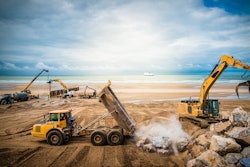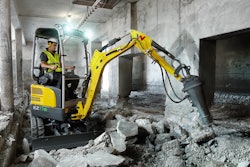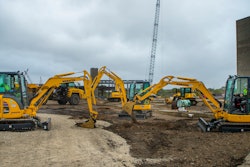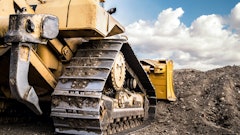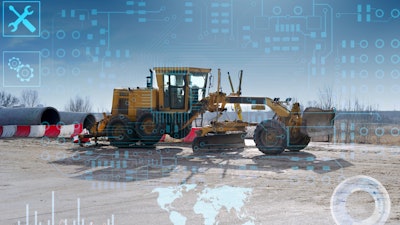
Time is running out for the established equipment industry order. The winners of tomorrow will be those that bundle today’s emerging trends in the right way. Industry heavyweights Alan Berger and Carl Gustaf Goransson signpost the way forward.
Why is the industry getting more competitive?
Carl-Gustaf Goransson (CGG): The industry remains fragmented and one result of having so many players is intense competition. This fight for customers has driven manufacturers to continually improve their products, such that the current standard of products is uniformly high. Because of this improved product quality, the risk of changing brands is low, meaning customers are becoming less loyal to particular brands. These factors together are driving a commoditization effect – if all products are good, then all products are the same. Indeed, the ability for the OEMs to drive price increases is becoming limited, with even larger machines becoming commoditized over time.
Another source of competition is being driven by the digitization of products, and how OEMs build and sell digital service offerings. The potential to increase revenue and profit in this area is significant.
In the future, will technology be the key differentiator between manufacturers?
Alan Berger (AB): In the short term, yes, but ironically, far from differentiating manufacturers, new technology will, over the longer term, accelerate the commoditization of equipment. It will also start driving the much-needed ‘lean’ productivity improvements on job sites that have transformed factories in recent decades. These systemic productivity improvements will be much greater than can be achieved by incrementally better equipment. Those that are early adopters of these technologies will reap the benefits, while the rest of the industry scrabbles to catch up.
How to develop and build digital services will be one of the keys to success. It will also move the sector from today’s largely ‘break it -fix it’ approach to a service offering based on data defined in the R&D process. A Digital service product is to a large extent built on information on performance, availability, security and changes of the product. Put simply, digital services will be defined and developed around this information and determine how machines are maintained and optimized.
Who will win the battle for market success – value or premium brands?
AB: I see it as a diverging and then converging set of trends. Developing economies are increasingly moving towards value products from value brands – as these products are now reaching reasonable levels of performance. But as products from all manufacturers become more commoditized the differentiator will increasingly hinge on brand attractiveness and value – and that’s where the established brands have a clear advantage.
CGG: As machines become more alike, we foresee buying behavior shifting from owning equipment towards a pay-per-use and/or rental business model. The established brands have been built up over decades – some are more than 100 years old. But although brand loyalties will still be important in the future, we expect the combination of commoditization and new ownership models to loosen established brands’ hold on consumer loyalty, leading to a fiercely competitive market landscape. The packaging of new machine sales with future services based on digitalized platforms will define success, both for value and premium brands, largely driven by customer demand for more insightful data.
 ©kosssmosss – stock.adobe.com
©kosssmosss – stock.adobe.com
What will be the fallout from Covid-19 – do you foresee an increase in OEM consolidation?
AB: I’m not sure the pandemic will be a driver of structural change. But the trend towards commoditization highlights that it is plainly inefficient for the industry to have so many manufacturers all making essentially the same investments in incremental product improvements. So, I see a longer-term trend for a) consolidation and/or b) alliances for the machinery, while the new competitive battle is played out in the technology and service arenas.
CGG: Even prior to Covid-19 the industry was ripe for consolidation among manufacturers. There is an over capacity in OEMs, in production and a lack of synergies in manufacturing footprint, optimization and supply chain setup. The technology roadmap is also in need of consolidation to save costs. With so many players in the market, without some level of consolidation, there is an issue of market sustainability. To counter this, OEMs may become more focused on specific segments and then grow in their respective areas. On the distribution side, dealers are likely to promote more brands than they currently do, and cover larger territories.
What should OEMs focus on to capture strategic advantage and growth?
AB: The larger players already have the scope and scale they need, so there is little benefit in them buying smaller OEMs. The smaller ones, however – particularly those with broad product portfolios – will need to seek scale just to survive. Regarding the high technology players, I think that the most successful providers of job-site level solutions will need to (at least appear to) operate independently from the well-known equipment brands, since they need to be able to provide equivalent functionality across multi-brand job-sites.
CGG: Consolidation is an attractive option, either within product segments, e.g. general-purpose equipment, road building etc., or consolidation within a geographical area, prioritizing areas of strong regional presence and building distribution infrastructure to grow their businesses. In other words, clearly defining and focusing on what are ‘core’ and ‘non-core’ products for the OEM will yield greater returns. Given the high focus on digitalized services adapting the sales process and business models towards the new offerings will also be a key differentiator in the future.
How important is winning ‘the battle for talent’ in the new look construction equipment industry?
CGG: The industry faces a challenge in recruiting the right people and is already suffering significant talent gaps today. Quite apart from a new generation of software programmers and engineers, modern machinery increasingly requires more advanced technicians to support equipment, both remotely and on-site. There is also a gap in our ability to analyze data. As digitization plays an ever-increasing role in tracking and maintaining equipment, the industry will have to try harder to be the employer-of-choice for people with these new skillsets.
AB: There is an enormous talent transformation that needs to happen across the industry. Much of the value in the future is going to be generated by technology/electronics, so the challenge is to maintain the current product knowledge while developing deep and fully integrated electronics knowledge beyond the current ‘bolted-on-the-side’ approach we see in most vehicle companies. I think the real winners in the industry will be those who succeed in this challenge
*This Q&A is part of an interview series led by Callum Sarsfield, Founding Partner at Pullmann Global.
About the authors
With a longstanding interest in automated machinery Alan Berger has worked in the vehicle industry for over 25 years. He has lead product development for Volvo Construction Equipment was Chief Technology Officer of CNH Industrial, focusing on leadership, product development efficiency and the digital and electrification transformation.
A seasoned global executive, Carl Gustaf Göransson has worked in the construction equipment industry for over 25 years. Most recently, he was Global President Construction for CNH Industrial and a member of the CNH Global Executive Council. Prior to that he was Senior Vice President Sales, Markets and Services with Cargotec’s Hiab Brand, and President European Central Construction Equipment with Volvo Construction Equipment.





